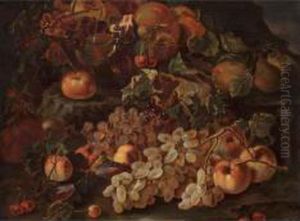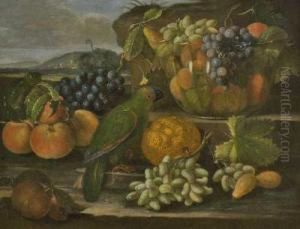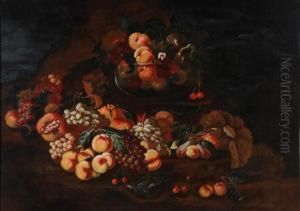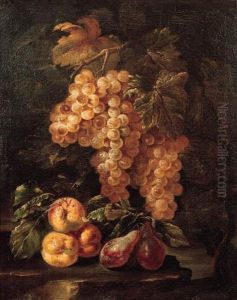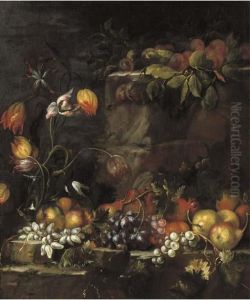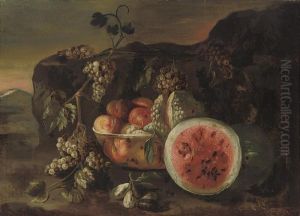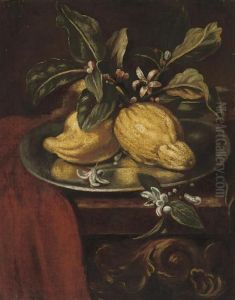Giovanni Paolo Castelli Spadino Paintings
Giovanni Paolo Castelli, better known as Spadino, was an Italian painter born in 1659 in Rome. He was particularly renowned for his still-life paintings, which were a popular genre in the Baroque period. Spadino's works are characterized by their vivid colors, detailed textures, and the realistic portrayal of fruits, flowers, and everyday objects.
Spadino was part of a family of artists, and he learned the fundamentals of painting from his father, who was also a painter. He quickly developed his own style, which was influenced by the works of Caravaggio and the Roman still-life painters of his time. His paintings often included a variety of objects such as musical instruments, books, and glassware, arranged in a manner that highlighted their beauty and the interplay of light and shadow.
Throughout his career, Spadino enjoyed significant success and his paintings were highly sought after by the Roman aristocracy and collectors. His ability to capture the texture and freshness of fruits and flowers made his works particularly appealing. He often depicted these subjects with a sense of abundance and richness that reflected the opulence of the Baroque era.
Despite his success, there is not a wealth of information about Spadino's personal life. His works, however, have been well-documented and continue to be admired for their technical skill and aesthetic beauty. Spadino's contribution to the still-life genre has been recognized as significant, and his paintings remain a testament to the Baroque period's fascination with the natural world and its objects.
Giovanni Paolo Castelli Spadino passed away in 1730, leaving behind a body of work that would influence future generations of still-life painters. His masterful combination of naturalism and artistry continues to captivate viewers and holds an important place in the history of Italian art.








